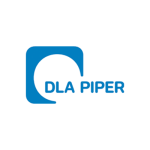In a decision rendered on April 1 2025, the Arnhem-Leeuwarden Court of Appeal (cases 23/714 and 23/715) ruled on the application of the Dutch interest deduction limitation included in Article 10a of the Dutch Corporate Income Tax Act (CITA).
Case details
The (abstracted) case involves a Swedish entity providing loans to a Dutch entity, which is part of the same group, for the purpose of acquiring the shares in an Italian listed company. The funds received by the Dutch entity were partly used for directly acquiring shares in the Italian company and partly used for a capital contribution in a subsidiary that also acquired shares in the Italian company.
The dispute between the taxpayer and the Dutch tax authorities centred on whether the Dutch entity is, for Dutch corporate income tax purposes, entitled to deduction of the interest expenses on the loans received from the Swedish entity. In this respect, the taxpayer argued that the existence of a treasury department at the level of the Swedish entity should allow for the application of an exception to the Dutch interest deduction limitation provided for in Article 10a of the CITA.
Legal framework
Deduction of interest expenses is, in principle, denied if a related party grants a loan to a Dutch company that uses the loan for one of the following so-called tainted transactions:
Profit distributions or repayment of capital;
A capital contribution; or
The acquisition or increase of a share interest in a company that becomes a related company.
One of the exceptions to this rule applies when the loan and the tainted transaction are mainly based on business reasons. In this respect, a loan may not qualify for the exception if there was re-routing of financing within the group to erode the Dutch tax base.
Taxpayers may rebut allegations of such re-routing if the entity making the loan to the Duch company fulfils a central financing function (treasury centre) for the group. In this respect, the normal function of a treasury centre is to attract funds from third parties and entities that are part of the same group for the purpose of financing other group entities.
Court decision and interpretation
The court of appeal referred to the previous decision in the same case, where the following criteria were outlined for determining the existence of a central financing function:
There is an active financing activity for group entities;
Its primary activity is the implementation of financial transactions, such as borrowing and lending funds, and managing excess cash for the group; and
There is independent decision making with respect to the day-to-day treasury activities, which includes the management of loans, sufficient qualified staff, and a separate financial administration.
In the case at hand, the taxpayer argued that there was indeed such a central financing function in Sweden at the time of incurring the loans, which was substantiated with, among others, a statement of a former employee, internal financial accounts, and various intercompany agreements.
The court found parts of the information brought forward lacking in detail and the statement of the employee could not be verified based on supporting documentation. In addition, the passage of time was not considered a valid argument from the taxpayer for not being able to provide more detailed (objective) information.
Given that the taxpayer did not meet the burden of proof for demonstrating the existence of a central financing function that had sufficient substance, the court of appeal rejected the interest deduction claimed by the taxpayer.
Key takeaways
The central financing function as a way to mitigate the application of the interest deduction limitation of Article 10a of the CITA remains important for structuring financing to a Dutch entity in a tax-efficient manner. The possibilities for tax planning through application of this exception seem to have prompted the court to require significant substantiation from the taxpayer that there was indeed such a central financing function.
The Netherlands has already been applying a ‘substance over form’ approach for many years in tax matters. However, this case makes it clear that the ‘form’ should not be neglected, either. In this respect, proper documentation and record keeping could be key in resolving tax controversy in general and interest deduction limitations specifically. It should also be kept in mind that cases may only be brought before a Dutch court after multiple years have passed.














